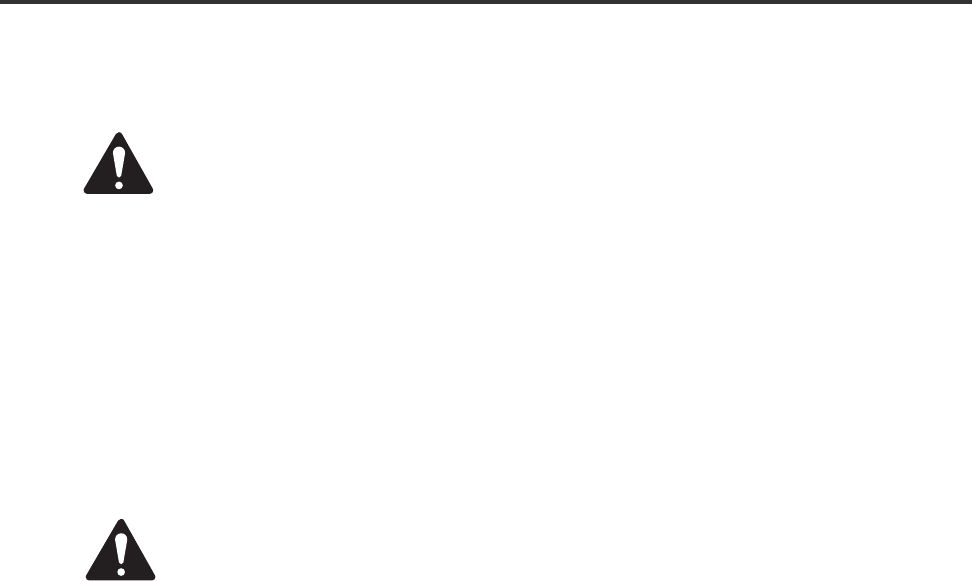
21
IMPORTANT USER CAUTION
USE- LED Indicators (continued) and Important User Caution
The 215PCM has been equipped with a very powerful internal amplifier. The amplifier power is several
times greater than the long-term power capacity of the drivers. This allows the full capacity of the
speakers to be used without reaching the clipping point of the amplifier. The extra power is provided for
greater dynamic range and impact, but the drivers can be damaged by excessive long-term operating
levels. To avoid speaker damage as well as amplifier thermal muting, the user should observe the following
operating limits:
NOTE! If both PWR indicator LED’s fail to illuminate after turning the power to the 215PCM
on, verify the AC power is working and is properly connected. If this fails to correct the
problem, disconnect the DataPort connections (if any) and retry. If the PWR indicator
illuminates now, the DataPort was forcing the amplifier into Standby mode. Refer to
QSControl documentation for information regarding amplifier Standby power status.
If one Processor’s PWR indicator illuminates and the other’s does not, it is possible that one of the
amplifiers could have a problem. First, disconnect the DataPort connections (if any) and retry. If the
PWR indicator illuminates now, the DataPort was forcing the amplifier into Standby mode. Refer to
QSControl documentation for information regarding amplifier Standby power status. If the indicator
still fails to illuminate, have the 215PCM serviced by a qualified technician.
LED Indicators (continued)
Average program power, 1-minute duration: 1500 watts (3dB below clipping point, 50% average power)
Average program power, 1-hour duration: 1000 watts (5dB below clipping point, 33% average power)
Average program power, 8 hours or more: 800 watts ( 6dB below clipping point, 25% average power).
These limits apply for speakers at normal operating temperatures. If the speakers have already been running at one
of the long-term limits, they will be at their full rated temperature, and should not be pushed to a higher short-term
power limit. When using a short-term operating limit, there must be a similar “rest” period between each run.
The speakers must be operated within their rated frequency range to avoid cone damage from overexcursion. If
there is audible distortion on certain notes, this must be noted as the maximum operating level, and average levels
must be regulated against this limit according to the figures shown above. Speakers operated at these maximum
limits will experience severe flexing stress, and should be inspected frequently for damage around the edge of the
cone, using a flashlight through the speaker grille.


















